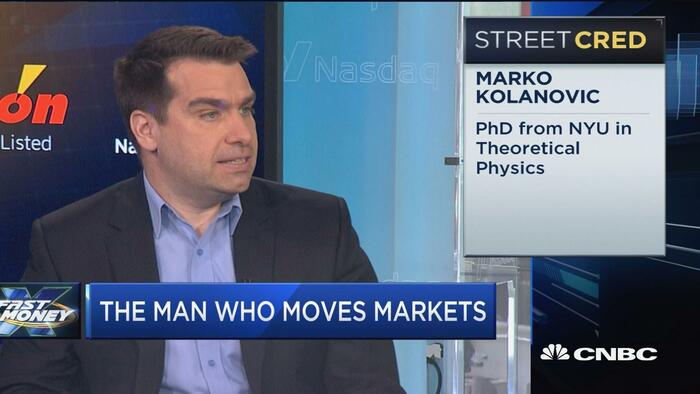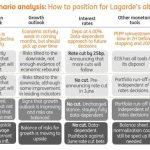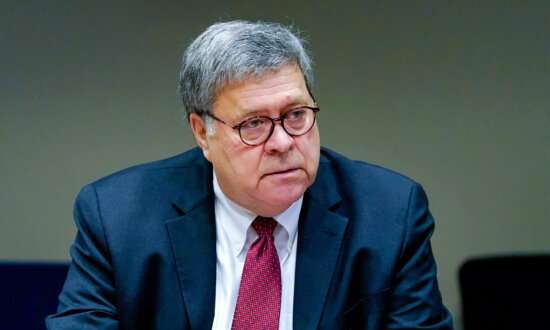It seems like it was a lifetime ago when, frazzled with the market’s rangebound trade, Wall Street’s biggest bears were coming up with fictitious narratives seeing bogeymen anywhere and everywhere, if it meant convincing their clients to sell. A distant one month ago – because during bank crises time moves in Inception terms – JPMorgan’s permabull-turned-permabear Marko Kolanovic was warning that Wall Street’s trading black box du jour, 0DTE or Zero Days to Expiration options, would somehow lead to “$30 billion in intraday selling” and crash the market. Such fearmongering was, of course, ridiculous – after all if 0DTE didn’t spark a liquidity cascade in the past week when we have seen the worst banking crisis since Lehman it never will – but it highlights a familiar trope among Wall Street strategists: take the latest market-moving bogeyman and make it into a monster, then goalseek the narrative for the highest employer benefit (almost as if the deposit-sucking JPMorgan has had an agenda to freak everyone out in recent weeks… and certainly small bank depositors).
And sure enough, one month later everyone has forgotten about 0DTE (which “shockingly” did not lead to a massive selloff) and instead attention is now occupied with what is a far bigger crisis – the collapse of small and medium regional US banks, and not so small Swiss banks… and until the Fed pivots, cuts rates and reintroduces QE, the contagion will continue because once lost, depositors confidence needs a reboot to the system, one which only a Fed capitulation can provide (the Fed came close by announcing USD swap lines yesterday but much more will be needed to safeguard $18 trillion in US deposits, and the latest step – a proposed guarantee of all US deposits is slowly but surely getting us there).
Enter Marko Kolanovic again, who in his latest note not only quotes Lenin (the infamous “There are-decades where nothing happens; and there are weeks where decades happen” which pops out like clockwork every time the FRA-OIS spread hits 50bps), but – having completely forgotten about his 0DTE doomsday thesis from just 4 weeks back – has now escalated the doom and gloom rhetoric to conclude that virtually everything that is now happening is bearish and that “the possibility of a Minsky moment in markets and geopolitics has increased.”
Translation: having tried to pinpoint the market’s weakest link one month ago – and failing – and having had nothing at all to say about what would have a fare more devastating impact on market psychology and the economy, the cascading failure of major banks (as described here weeks ago), Marko is now just shotgunning it and hoping that something sticks to the wall, so that he can then point to it and say: “look, I was right.” Here is the choice excerpt from his latest note:
A lot has happened in the past week. The bailout of several US banks did not manage to calm markets, which consumed another large bank in Europe. In a Trichet-like moment, the ECB increased rates by 50bps. The Fed is facing a difficult task on Wednesday, but it is likely already past the point of no return – a soft landing now looks unlikely, with the airplane in a tailspin (lack of market confidence) and engines about to turn off (bank lending). China brokered a Middle East deal, and there is a presidential visit to Russia this week. “There are decades where nothing happens; and there are weeks where decades happen”— Lenin.
The possibility of a Minsky moment in markets and geopolitics has increased. Even if central bankers successfully contain contagion, credit conditions look set to tighten more rapidly because of pressure from both markets and regulators. We stay neutral duration in the US and Europe amid cross-winds, favoring 10s/30s steepeners as an asymmetric way to position for an eventual Fed pause.
Cracks are beginning to emerge in US credit fundamentals, and Euro credit spreads will likely continue to widen unless we see meaningful policy intervention. The historical template for FX during widening credit spreads is for USD strength, coupled with relative safe-FX (USD, CHF, JPY) strength vs. highbeta. We see little change in oil fundamentals and keep our price forecasts unchanged for now, while financial stress and macro uncertainty have boosted safe haven demand for gold and silver.
There is a famous saying about a broken clock that is right twice a day… and yet, when it comes to Marko’s track record the past two years don’t even show that: starting in January for all of 2022, the JPM strategist was telling clients to buy the dip, yet every time a new and bigger dip emerged. Marko then flip-flopped in late September, and turned bullish which as we said at the time, marked the market bottom…
Kolanovic turned bearish. Bottom https://t.co/bXVFOHDoRS
— zerohedge (@zerohedge) September 30, 2022
… which it has been to this day. Meanwhile, stocks have continued to grind upward, reaching as high as 4,200 all the while Kolanovic kept invoking the latest and greatest bogeyman du jour in hopes of convincing JPM’s remaining clients to sell… to JPM of course.
And speaking of clocks, broken or otherwise, JPM is one of the banks that still expects the Fed to hike 25bps even though moments ago Bloomberg reported that the Treasury is now studying how to backstop all $18 trillion in US deposits. Needless to say, trying to destroy your banking system with one hand (small banks can’t match anywhere near 4.75% in deposit rates, surely 5.00% will be a slam dunk) while saving it with the other (and $18 trillion in deposits) is something the US government will excel at… unless of course the Fed isn’t actually advised by Hunter Biden and the Fed does not hike 25bps on Wednesday. Then again, if Powell does go ahead and tighten financial conditions further, the only thing that will follow is an even bigger and faster rate cut, just as Elon Musk suggested on Monday evening.
Fed needs to drop the rate by at least 50bps on Wednesday
— Elon Musk (@elonmusk) March 21, 2023
What is remarkable is that instead of discounting the future, one where the Fed is about to unleash all liquidity spigots and making it rain sending risk assets to the moon, Marko is doubling down on what has been a wrong call for the past 6 months.
“Use relief bounces to reduce beta and Value factors further. We stick to our call that Q1 will likely end up the high point for stocks this year. This call is predicated on the view that bond yields will move lower along with a likely end of PMI rebound soon, as the impact of past policy tightening starts to take full effect, and the positive offsets (e.g. the cushion of COVID savings and pricing power for corporates) erode,” he said.
Translation: Marko believes that even though the Fed is about to unleash a liquidity bazooka at the relentless bank crisis, the S&P has already seen its highs for the year and will soon take out 2022 lows. We’ll take the other side of that bet.
More in the full JPM note available to pro subs.
Loading…












